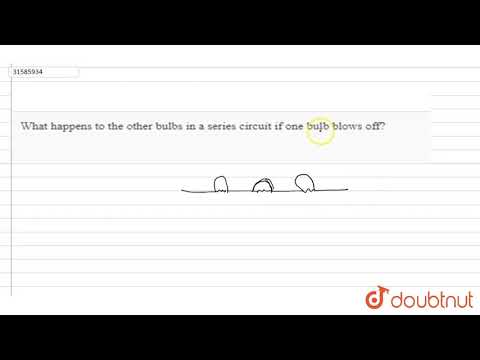What Happens To The Bulbs In A Series Circuit If One Bulb Blows?
What Happens To The Other Bulbs In A Series Circuit If One Bulb Blows Off?
Keywords searched by users: What happens to the bulbs in a series circuit if one bulb blows what happens to the other bulbs in a parallel circuit if one bulb blows off, if one bulb blows in a parallel circuit, in a series circuit what happens when one bulb burns out, what will happen if one light bulb is removed from this circuit, which circuit consists of more than one pathway for electricity, what happens to the current in the series circuit if the resistance is doubled?, In a parallel circuit if one of the light bulbs burns out the rest, if one bulb is broken the rest are off
What Happens To A Series Circuit If One Of The Light Bulbs Is Blown?
In a series circuit, each component is connected sequentially, one after the other, forming a single path for electric current to flow. This arrangement means that the functioning of every device is crucial for the circuit to operate properly. When a light bulb in a series circuit burns out or fails, it disrupts the entire circuit, resulting in all connected devices, such as other bulbs or appliances, losing power. This is because the open circuit created by the blown bulb interrupts the flow of electricity, preventing it from reaching the other devices.
In contrast, parallel circuits offer a different configuration. In a parallel circuit, each device is connected to the power source individually, creating separate paths for electric current. In this setup, even if one light bulb burns out or fails, the others continue to function independently. This resilience arises because each light has its dedicated circuit, allowing electric current to bypass the failed component and continue powering the remaining devices.
What Happens To The Remaining Bulbs When One Bulb In The Circuit Goes Out?
When one bulb in a parallel electrical circuit burns out, the remaining bulbs will stay illuminated. This happens because in a parallel circuit, each bulb has its own separate pathway for electricity to flow. Therefore, if one bulb fails, the closed circuit remains intact, allowing the current to pass through the functioning bulbs, keeping them lit. This feature of parallel circuits ensures that the failure of one bulb does not affect the operation of the others, providing reliability and continuity in the lighting system.
Categories: Aggregate 86 What Happens To The Bulbs In A Series Circuit If One Bulb Blows
See more here: taomalumdongtien.net

The same current flows through each part of a series circuit. If the circuit is broken at any point, the circuit would be open and no current will flow. So, if one of the bulbs blows out, the other bulbs would not be able to glow.In a series circuit, every device must function for the circuit to be complete. One bulb burning out in a series circuit breaks the circuit. In parallel circuits, each light has its own circuit, so all but one light could be burned out, and the last one will still function.In a parallel combination, even if one of the bulbs blows out, the other bulbs will continue to glow as electricity still has a closed circuit to flow.
Learn more about the topic What happens to the bulbs in a series circuit if one bulb blows.
- What happens to the other bulbes in a series circuit if one bulb …
- How Electrical Circuits Work | Lighting Basics – Bulbs.com
- What happens to the other bulbs in a parallel circuit if one bulb blows off?
- Physical Science Final Flashcards – Quizlet
- What happens to the other bulbs in a series circuit if one …
- What happens to the other bulbs in a series circuit if one …